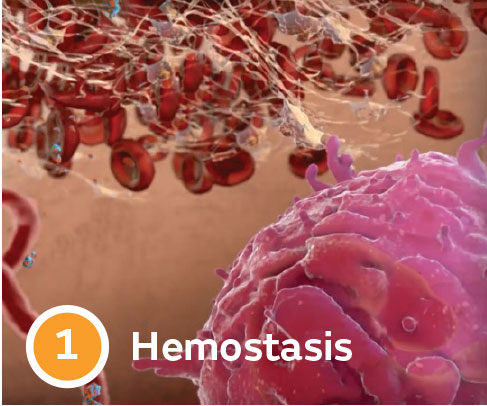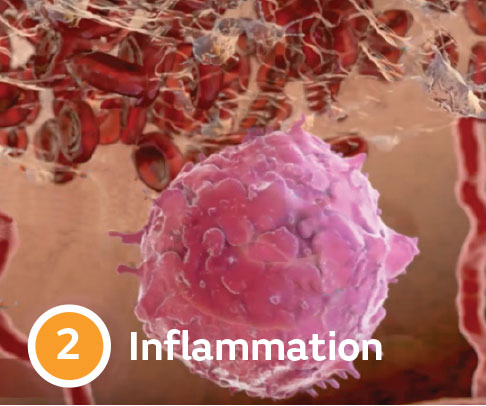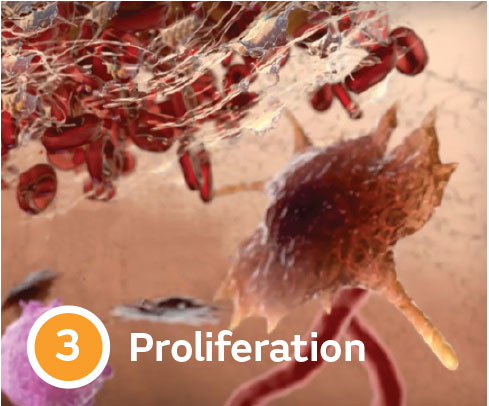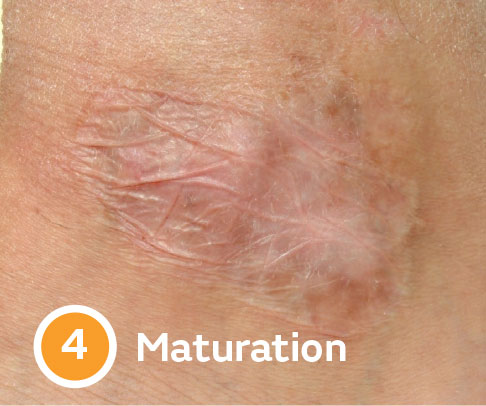Remove the barriers to healing
The only FDA-approved enzymatic debridement agent indicated for debriding both chronic dermal ulcers and severely burned areas. Its unique mechanism of action selectively removes necrotic tissue without harming healthy tissue.31-33
In normal wounds, healing progresses through four overlapping, highly regulated phases. A disruption of this process, often due to comorbidities such as diabetes, infection and venous insufficiency, can result in a stalled wound, most notably in the inflammatory phase.1
Four phases of wound healing

This phase is characterized by clot formation, which features a dynamic matrix of proteins and cells that provide critical support for incoming endothelial cells, fibroblasts and growth factors.27

Neutrophils, macrophages and mast cells serve to remove debris, foreign particles and bacteria, produce collagen; and secrete growth factors.27

As inflammation resolves, granulation tissues begins to dorm and fibroblasts, endothelial cells and keratinocytes migrate to the wound site. 27

Collagen remodeling and epithelialization characterize this final phase of wound healing.27
When this happens, clinicians often turn to wound bed preparation methods such as debridement to help remove barriers to healing. But not all debridement methods are the same; only enzymatic debridement removes necrotic tissue in an active, ongoing and selective manner.4,7
Active
Unlike autolytic methods that simply support the body’s own healing process, SANTYL Ointment actively removes necrotic tissue at the macroscopic level through collagenase, an exogenous bacterial enzyme.4,7
Ongoing
Episodic sharp debridement removes necrotic tissue from the surface of the wound on a weekly or bi-weekly basis. As a powerful adjunct to this, SANTYL Ointment provides at-home removal of macroscopic and microscopic necrotic tissue from the wound surface and the wound bed on a daily basis.4,7
Selective
SANTYL Ointment features a unique mode of action that selectively removes necrotic tissue while preserving healthy granulation tissue, giving you a wound care approach you can feel safe implementing.4,7,31-33
Debridement that delivers more
The unique mechanism of action of enzymatic debridement not only works to remove barriers to healing, it also creates cellular changes in the micro-environment of the wound that are conducive to statistically significant closure rates when compared to other debridement therapies.8-11

